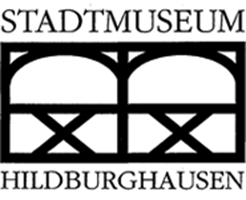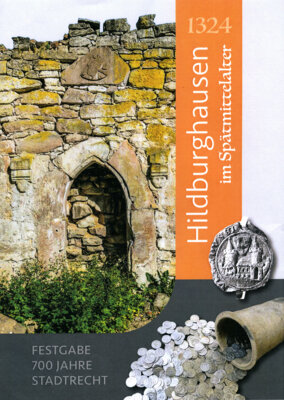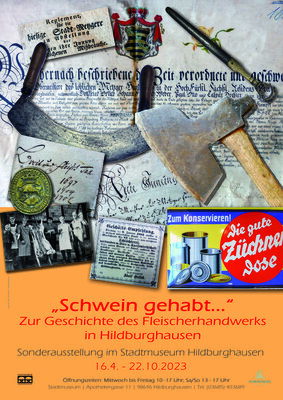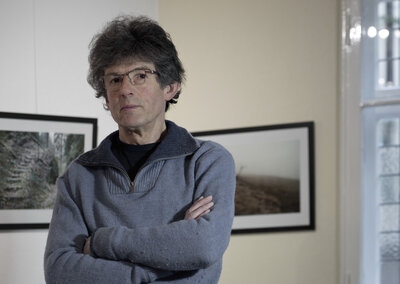Every house tells a story and has its place in history
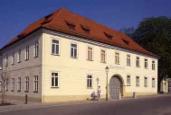 The historical monument "Alte Post" in Hildburghausen which has been lovingly restored between 1989 and 1993, now houses the collections of the town museum of Hildburghausen (est. 1904). Stadtmauer
The historical monument "Alte Post" in Hildburghausen which has been lovingly restored between 1989 and 1993, now houses the collections of the town museum of Hildburghausen (est. 1904). Stadtmauer
The building itself is a good representation of the architectural history of Hildburghausen. A city wall tower from the 14th century and a merchant family house from the 16th century were later joined and some extensions were added.
Laubengang This conglomeration of different stages of construction culminates on the city wall side with a half-timbered arcade.
Everything is unified and rounded off by a classical façade which fronts the building.
From 1809 to 1949 the building served as a post office for Thurn and Taxis.
Hildburghausen’s history and stories are told by many permanent exhibits in the museum. The story arcs from the first documentary mention in 1234 through to small town life of subsistence farmers, from courtly life of a small state up to the industrial development in the 19th century and from the famous college of technology ("Technikum") in the "town of schools" up to current everyday life.
Joseph Meyer The highlight of the permanent exhibition is a valuable collection of first editions of the Bibliographical Institute (1828 - 1874) of Joseph and Hermann Meyer, one of the most successful publishing houses of the 19th century which has made an indelible mark on European publishing history.
A 52-volume first edition of Meyer’s Conversation Lexicon is part of the many admired exhibits here. Finally, the secrets surrounding the mysterious Dark Countess attract many guests from Germany and abroad.
Historical city hall and Türmerwohnung
Historisches Rathaus The Türmerwohnung (tower guardian’s residence) had its roof restored in the course of the overall renovation of the historic city hall of Hildburghausen, which was completed in 2001. The residence was then affiliated to the town museum as a branch office. It has beeen reconstruceted in a period fashion to the time of the last Türmer (tower guardian) who lived there until 1919.
Ausstellung im Historischen Rathaus The City Hall, presumed to be the oldest building of the town, contains a permanent exhibition which deals with its history.
The Türmerwohnung and City Hall can be viewed by appointment only which can be arranged at the town museum.
Special exhibitions and events
take place every year on varying topics. Since reopening in 1993 the museum has welcomed numerous guests for readings, lectures as well as mounting feature exhibitions by the museum and of artists.
Opening hours
Tuesday till Sunday; 10.00am - 17.00pm
Monday; closed
Guided tours are available by prior arrangement
Admission fees
Adult 3,50 €
Children, OAP’s and Concessions 2,00 €
Guided tours (duration 1 hour up to 20 persons) 25,00 € in addition to the normal admission price
Introductory lecture (duration 10 minutes) 5,00 € in addition to the normal admission price
Admission Rathaus and Türmerwohnung
Adult 3,50 € / Children, OAP’s and Concessions 2,00 €
Guided tours of the town are also available on request. Duration is about 2 hours.
Please pre-book at the town museum.
Educational offer of the museum:
There are broschures available at the museum for almost every part of the exhibition at a price of 0,60 € (prices may vary for certain brochures). Guided tours can also be prebooked for the entire exhibition as well as for specific parts of the exhibition. Furthermore, project days for students (best book these at the beginning of the school year), guide tours appropriate for different age groups (starting at preschool age) and school events can be arranged.
Please request details from the head of the museum.
Address
Stadtmuseum Hildburghausen
Apotherkergasse 11
98646 Hildburghausen
Tel.: +049 (0)3685-403689
Fax.: +049 (0)3685-406790
E-Mail:
You can also find further information about the history of the town at www.Hildburghausen.de
A house’s history and stories
Hildburghausen is a town full of traditions and history. First documentarily mentioned in 1234, the little farming town, whose citizens mainly earned their living as clothiers until the 17th century, only made slow progress. Stadtsiegel The approximately 12 hectare large town centre had merely two small suburbs in those days, where the socalled "Pfahlbürger" (bourgeois) lived, i.e. citizens with only a partial citizenship.
Keller After the socalled Stone House ("Steinhaus") was destroyed in a large town fire in 1388, Landgrave Balthasar of Thuringia gave the ruin to the town in 1395 to build a town hall and an emporium. Said town hall along with the town were heavily damaged during a hurricane in 1572 and rebuilt in its present Renaissance form between 1594 and 1595.
During the Thirty Years War (1618 - 1648) the people of Hildburghausen had to endure troops making their way through the town, pillaging and epidemics.
The town itself though miraculously was spared from destruction.
Schloß 1680 brought an important turning-point in the town’s history.
Due to the contract of distribution of his estate amongst the seven sons of Duke Ernst the Pious of Saxony-Gotha, the Principality Saxony-Hildburghausen was formed. Duke Ernst finally decided for Hildburghausen to be his residence in 1684 and began building his Residence Palace and a barock park in the southern part of town in 1685.
Following the decree of the Huguenot Edict in 1711, the Duke offered a new home to the in France persecuted Huguenots and twelve families settled in the thus newly created town the same year.
They brought the fine savoir vivre and new crafts into the small residence town by the river Werra.
But Duke Ernst demanded too much from the financial power of his little state with his royal household and ongoing construction measures. His successors unfortunately continued his lavish life style so that in 1769 the emperor felt impelled to deploy a debit commission to govern the finances of the highly indebted principality.
A member of this commission was Prince Joseph of Saxony-Hildburghausen, "Generalfeldzeugmeister" of his Majesty and former commander of the Reichs Army in the Seven Years War.
On August 19th 1779, a large fire destroyed a third of the town and the old town church St Lorenz. With joint endeavour and the support of the "Vormundschaftsregent" (guardianship regent) Prince Joseph the buildings including the church were rebuilt until 1785 following a unified construction plan and still shape the eastern part of town and the market square today.
During the reign of the last Duke of Hildburghausen Friedrich (1787 - 1826) and his beautiful wife Charlotte of Mecklenburg-Strelitz, cultural life in the small town reached its highpoint. Numerous poets and artists spent time there leading to the town’s nickname "Klein-Weimar" (Little Weimar).
A daughter of the Duke, Therese (see picture below) married the Bavarian crown prince Ludwig, the future King Ludwig I. in 1810.
The origin of today’s Octoberfest can be found in the festivities surrounding their wedding in Munich.
A mystery which remains to be solved completely to this day began in 1807 with the arrival of the mysterious "Dark Count Couple" ("Dunkelgrafenpaar") in Hildburghausen. They lived a very reclusive life here until 1810, when they moved to nearby Eishausen. The lady’s grave, she died in 1837, can still be found at the Stadtberg (town mountain). It is considered highly likely today, that she was the daughter of King Louis XVI of France and his wife Marie Antoinette.
Hildburghausen’s history as a residence town ended in 1826. Following a redistribution of the saxon-ernestine counties the duchy was merged with Saxony-Meiningen and the last Duke Friedrich moved to Altenburg.
This painful loss though, was slightly alleviated when Joseph Meyer (see picture below) moved his Bibliographical Institute from Gotha to Hildburghausen in 1828.
The first edition of "Meyer’s Conversation Lexicon" was published here along with many other works between 1840 and 1855.
Run by Joseph Meyer and his son Hermann, the Bibliographical Institute became one of the most successful and influential publishing houses of the 19th century.
Well-known publications other than the lexicon included the "Groschenbibliothek" ("penny library"), a precursor of the Reclam books, the "Universe" with its beautiful steel engravings and of course "Brehm’s Animal Life".
After the Bibliographical Institute moved away to the book town Leipzig in 1874, none of the remaining small industrial companies managed to become influencial for the national market development.
Worth mentioning here are two companies, namely the doll factory of Andreas Voit (later Ernst Conrad) which possibly was the first company to manufacture doll heads made of papermâché in 1814 and the "Fabrik für kondensierte Suppen" (factory for condensated soups) founded in 1870 by Rudolf Scheller, the inventor of instant soup and the bouillon cube.
Hildburghausen nonetheless, remained a town of schools and administration.
It definitively became the "Town of Schools" when Wilhelm Rathke relocated his "Technikum" from Sondershausen to Hildburghausen in 1879. The number of student increased steadily so that a new Technikum had to be built at the canal of the palace garden in 1896.
Though the increase of students boosted the revenues of the numerous local taverns around 1900, they were also known for playing pranks and causing trouble.
After World War II the Technikum was not reopened.
Not to be forgotten is the tradition of copper engraving, which developed alongside the Bibliographical Institute. After the Institute left Hildburghausen a few engravers stayed in town and founded numerous copper engraving facilites, which were mainly devoted to cartographic engraving, for example Petters, Metzeroth and Doelecke.
The palace which had been used as barracks since 1867 was shot on fire and heavily damaged when the American troops marched in on April 7th 1945. Its remains were later demolished.
After World War II the district town lay directly by the Zone’s border and was thereby cut off from its historical and natural relation with Franconia and Bavaria which wasn’t restored until the political change in 1989/90.
Exhibition rooms:
Cellar:
- "The town in the middle ages"
First floor:
- "The Historical Black Kitchen" and special exhibitions"
Second floor:
- "The Thirty Years War and its consequences"
- "Hildburghausen’s craft"
- "Hildburghausen as residence"
- "The great age of the Biedermeier"
- "Joseph Meyer and the Bibliographical Institute"
- "Copper engraving tradition"
- "Economic life in the 19th century"
- "The Technikum"
- "Taverns and societies"
- "Between World Wars"
- "A district town between East and West"
- "History of the "Alte Post""
- "The Dark Countess"
- "The Black Kitchen"
Historical city hall and Türmerwohnung
With the renovation of the historical town hall of Hildburghausen the possibility arose to take a deeper look into the building’s history. The socalled "Steinhaus" ("Stone House") which had been destroyed in a fire had been built in the middle of the 12th century and served the vassals of the head of the individual county as a fortified housing facility. Preserved floor tiles and remains of ceramics works attest to the surprisingly high comfort of the building.
After Landgrave Balthasar of Thuringia gave the Stone House’s ruin to the citizens of Hildburghausen they rebuilt it into a town hall and an emporium. The butchers and bakers had their stalls on the first floor, the upper floors were used as convention halls for the council and citizens as well as a place for cloth vendors merchants, while the served as a storing place for grains.
The Türmerwohnung had also already been in use at that time. This first town hall building stood until 1572 when Hildburghausen was badly damaged by a hurricane and both the roof and upper floores of the town hall were blown off. Miraculously, tower guard Melchior Sinder and his family of four survived the plunge into the depth.
In 1594 and 1595 the town hall was rebuilt in its present Renaissance form.
The Türmerwohnung has been altered and expanded over the years and is now mainly furnished for museum purposes. The interior takes you back to the days of the last tower guard Louis Fischer who resided there until 1919.



